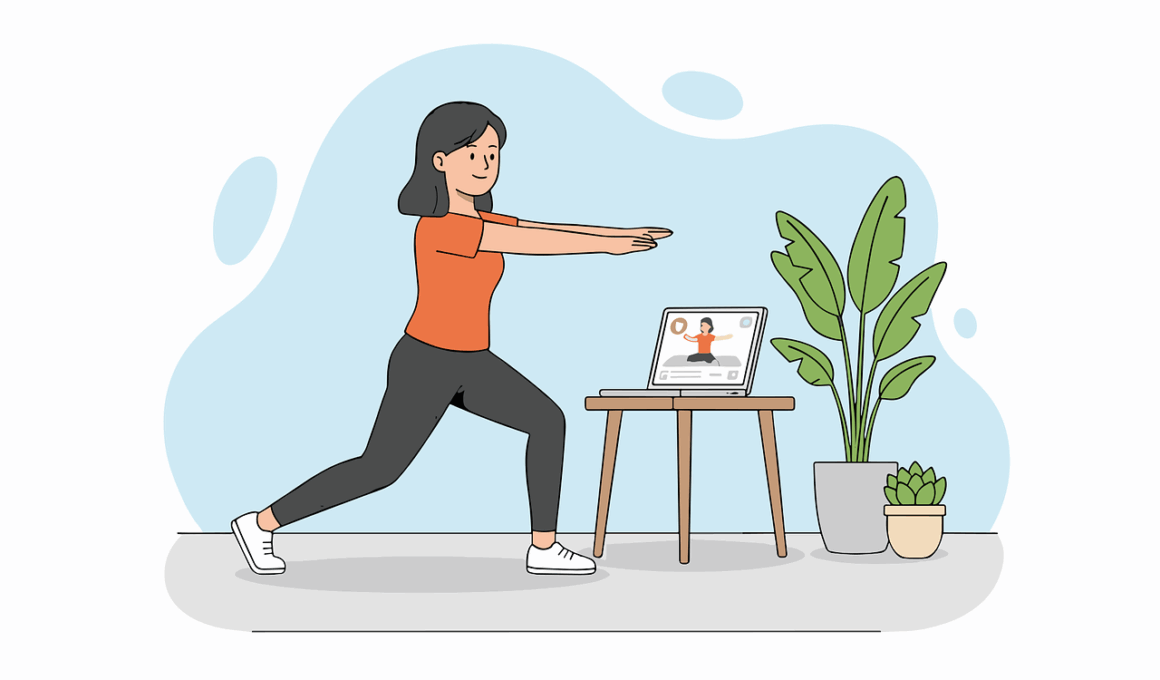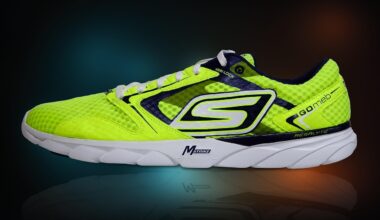Case Studies: Success Stories Using VR in Adaptive Fitness and Rehabilitation
In recent years, various case studies highlight the transformative role of virtual reality (VR) in adaptive fitness and rehabilitation for individuals with disabilities. Innovative VR programs provide surprisingly effective motivation that encourages participation in physical activities. One notable example is the use of the VR platform in therapeutic settings for stroke patients, where engaging simulations facilitate motor recovery. Participants utilize controllers to interact with immersive environments, prompting meaningful movement that stimulates neural pathways. This stimulating method increases enthusiasm and consistency of workouts. Furthermore, the real-time feedback gathered through VR systems aids therapists in monitoring progress and adjusting therapy perspectives, enhancing personalized treatment plans significantly. In global centers, rehabilitation initiatives integrate VR into daily routines, blending entertainment with exercise. Research shows that these interventions not only improve physical function but also enrich the emotional well-being of participants. As a result, caregivers report enhanced satisfaction and engagement levels among clients, contributing to a more fulfilling rehabilitation journey. The commitment to incorporating cutting-edge technology like VR holds immense promise for future advancements in adaptive fitness efforts aimed at uplifting individuals with disabilities, leading to healthier lifestyles and improved quality of life.
Improved Social Interactions
One of the remarkable advantages of integrating virtual reality technology into adaptive fitness is the enhancement of social interactions for individuals with disabilities. Through such initiatives, participants engage in group activities that eliminate physical barriers, introducing an inclusive environment. Numerous studies have documented substantial improvements in participants’ social skills as users interact with virtual avatars during group workouts or games. This immersive setting allows them to form friendships, share experiences, and build support networks among peers facing similar challenges, enhancing community engagement. Through social frameworks, participants experience reduced feelings of isolation and loneliness, fostering collective motivation. Ultimately, these connections boost mental health, resilience, and overall well-being. Innovative VR experiences often include multiplayer functionalities where individuals collaborate on fitness tasks, leading to achievements within a shared context. Furthermore, community-based programs harness the potential of social media within VR platforms to extend interactions beyond the training session. Participants can communicate outside these environments, thus creating deeper and lasting social bonds. By learning together, overcoming obstacles, and celebrating accomplishments collectively, they enhance their journey toward recovery in an unusually encouraging setting.
Another shining example of VR in adaptive fitness is its application within rehabilitation programs tailored to individuals with physical disabilities. Programs that incorporate VR technology provide unique 3D environments that simulate real-life scenarios. This helps users practice various movements while working toward physical recovery. A successful case involved individuals with limb impairments participating in game-based rehabilitation exercises. They utilized VR headsets to engage in activities that both challenged physical capabilities and presented entertainment value. By gamifying rehabilitation, users showed improved effort, greater commitment, and significant strides in their movement abilities. The high levels of user engagement not only reduced dropout rates but also fostered a sense of achievement. Assessments report enhancements in strength and coordination during targeted exercises due to frequent practice in the virtual settings. Moreover, adaptive designs allow customization to match specific abilities and recovery goals. Workers within these therapeutic settings noted a marked increase in overall satisfaction and enjoyment levels among participants, paving the way for more inventive rehabilitation practices. As users overcome challenges and celebrate milestones, the anticipation of succeeding within these immersive experiences fuels their desire for continuous improvement and empowerment.
Overcoming Anxiety and Fear
For people with disabilities, anxiety can serve as a significant barrier in maintaining a consistent fitness regime, particularly within communal settings. VR experiences help combat these anxieties and fears by providing safe environments where users can practice movements without real-world repercussions. Whether it’s the fear of judgment from peers or anxiety anticipating a physical challenge, having immersive virtual settings drastically mitigates these challenges. A case study showcased the benefits of VR fitness classes for individuals suffering from anxiety disorders. Participants reported increased confidence and comfort levels after consistently engaging in cool-down and stretching exercises guided by virtual instructors. They could explore different settings using VR headsets before joining large group classes, allowing them to acclimatize gradually. Additionally, the interactive nature of VR keeps users entertained, interrupting negative thought patterns commonly associated with fitness. As they build trust in their virtual counterparts, many develop a healthier relationship with fitness activity. This encourages higher motivation and an eagerness to tackle new challenges. Consequently, the blend of technology and adaptive fitness presents an excellent opportunity for personal growth and overcoming prevalent fears among participants.
Advancement in adaptive fitness technology embraces the prevalence of virtual reality platforms to create realistic scenarios that allow users to explore outdoor activities. Individuals with disabilities often face significant barriers when trying to access recreational spaces, and VR provides reasonable alternatives. An attractive case study highlights how adaptive fitness programs evolved to include adventurous activities involving virtual exploration of national parks and scenic landscapes. Participants could experience activities like kayaking, hiking, or rock climbing within the comfort of their rehabilitation centers. These virtual adventures promote excitement and curiosity, enhancing motivation while enabling users to develop practical skills. Furthermore, they can engage with these experiences independently or collaboratively in groups. The result of these simulated adventures is that individuals feel empowered, developing confidence and competence in their movement abilities. Moreover, the ongoing progress achieved helps participants define personal goals relating to real-world outdoor activities. Health practitioners prove that VR not only facilitates physical therapy but also expands emotional horizons by crafting meaningful experiences. With these innovative approaches, users can gradually reveal newfound keen interests that may translate into real-world pursuits, fostering a zest for activity beyond rehabilitation efforts.
Family and Caregiver Engagement
The introduction of virtual reality into adaptive fitness programs also promotes significant involvement from family members and caregivers, which is crucial for participant success. By creating family-inclusive VR experiences, programs encourage families to partake in workouts or supportive activities. Case studies highlight various initiatives that provide shared interactive family sessions, leading to stronger bonds and enriching relationships. Participants express enhanced motivation when they can involve loved ones in their fitness routines, cultivating a sense of community and support. Caregivers report noticeable positive changes, finding encouraging platforms for communication within family dynamics. Regular interactions in shared VR settings allow families to celebrate small victories together and embrace the journey, shifting perspectives on adaptive fitness. This shared experience engenders a team mentality, ensuring enthusiasm remains consistent during recovery phases. Moreover, VR platforms offer extensive tracking tools for family members. They can monitor progress and become informed advocates for their loved ones’ rehabilitation journeys. The overall result is an environment of encouragement, showcasing the united commitment to adaptive fitness and rehabilitation efforts. This collaboration also ensures tailored support that addresses individual needs while fostering a deep connection between participants and their families.
The remarkable stories surrounding the integration of virtual reality in adaptive fitness and rehabilitation reveal a hopeful future for individuals with disabilities. These pioneering initiatives showcase the potential of VR technology to augment engagement, improve emotional well-being, and promote physical recovery. Success stories consistently arise from continuous development in VR applications designed specifically for adaptive fitness. As practitioners discover ways to enhance accessibility and address unique challenges, the overall fitness landscape changes. Overwhelming positive outcomes emerge from a variety of scenarios, capturing both physical milestones and emotional transformations. This evolution encourages creativity in therapeutic settings, ensuring that fitness programs remain adaptable to the growing needs of diverse populations. Ultimately, the growing interest in such technologies solidifies the commitment to ensuring that everyone has access to inclusive fitness solutions. As new techniques and reports emerge from clinical settings, the global conversation surrounding adaptive fitness broadens, creating pathways to share vital insights and practices. The future of fitness for individuals with disabilities shines brighter, as VR continues to bridge gaps, empower users, and cultivate resilience through engaging, fun, and effective fitness experiences.
This final paragraph explores the ongoing challenges and advancements in virtual reality experiences tailored for adaptive fitness and rehabilitation. As technology progresses, there are essential considerations for ensuring that VR programs remain relevant, engaging, and beneficial for users. Research continues to document the long-term effects and adaptability of VR solutions across various demographics and disabilities. A continued focus on customizing experiences based on user ability, background, and preferences can significantly enhance participation rates. Moreover, user feedback must be incorporated regularly into system updates to address evolving needs and desires promptly. Collaboration among researchers, healthcare practitioners, and technology developers becomes essential in unity, fostering holistic understanding. Addressing inequities in access to virtual reality technology is crucial and requires advocacy beyond development. Organizations must actively work together to ensure broader accessibility, accommodating users from all walks of life. By nurturing inclusivity in adaptive fitness approaches, the integration of VR technologies will witness even more remarkable success stories, ultimately leading to a healthier society. The evolving narrative of VR in this crucial sector evokes hope and commitment from various stakeholders continuously dedicated to advancing adaptive fitness for individuals with disabilities.


